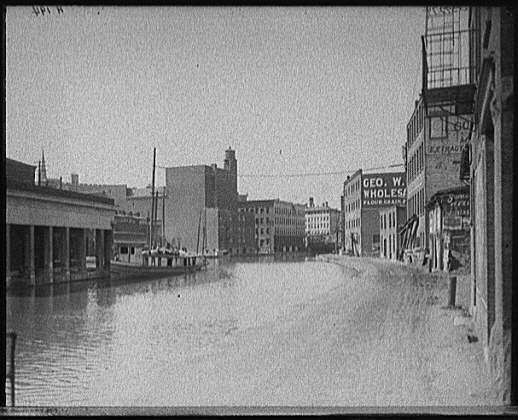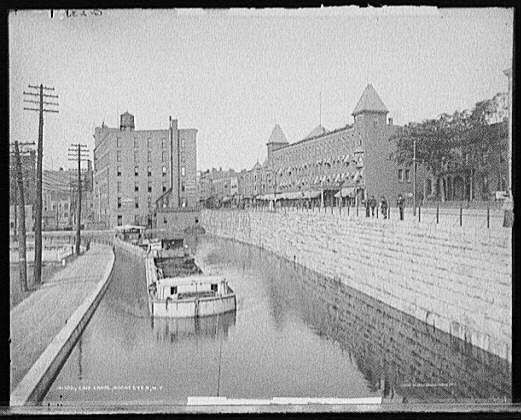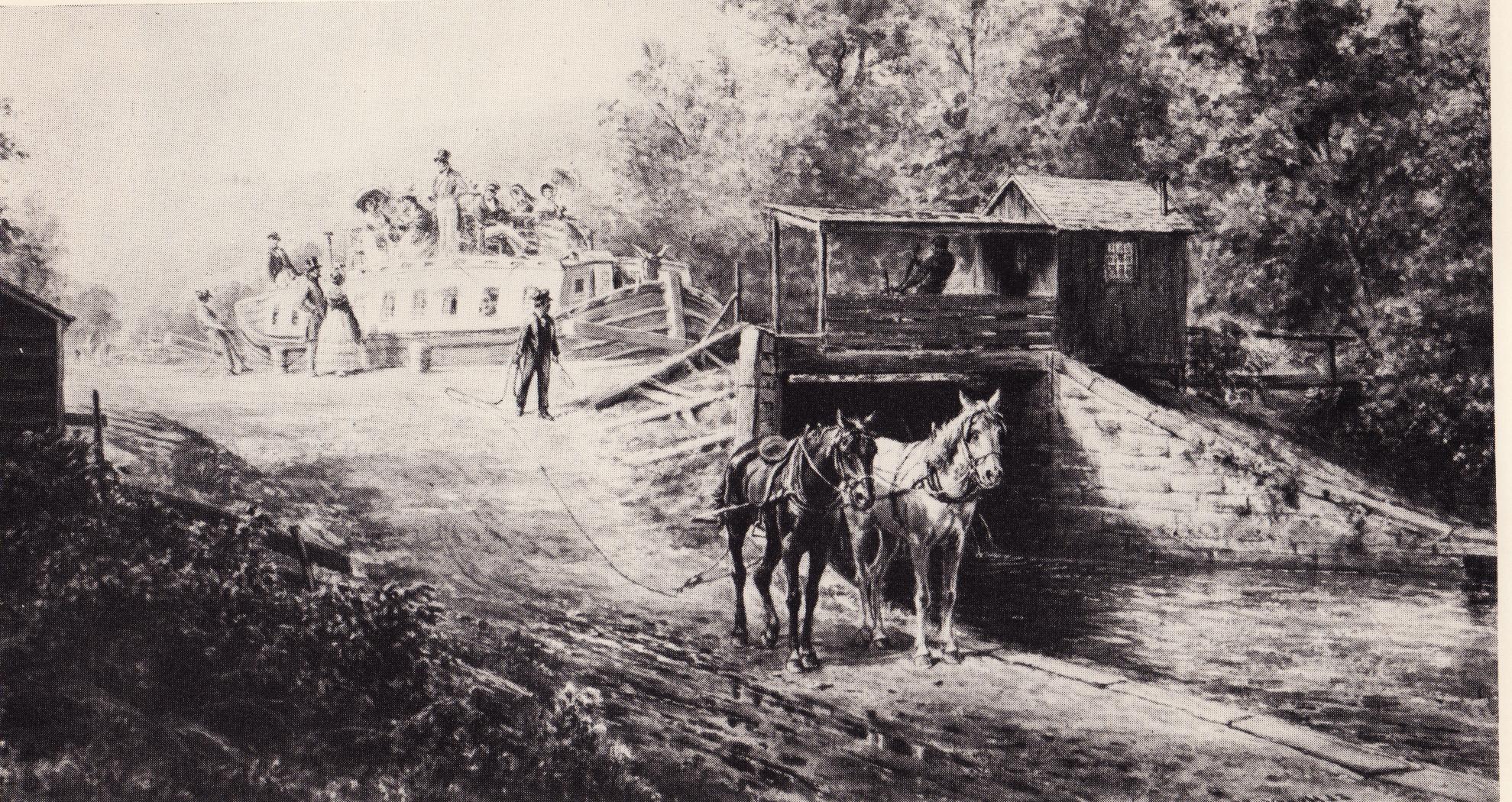Tourism and Development
It is impossible to determine how different New York would be if tourism on the Erie Canal had not existed. This blossoming economy touched so many different parts of the state, often bringing beneficial changes. One thing the Erie Canal definitely accomplished was making cities along the canal more popular. Soon after the canal was built, cities began to gain new reputations. Albany was known for its excellent accommodations, but also its high costs. Utica was looked upon for having many beautiful churches and a high amount of stagecoach activity. Utica was also famous for its close proximity to Hamilton College.

Utica, 1900-1915
Rochester had a coffee house that was extremely popular, and the hotels at Niagara Falls were exquisite. Many tourists would travel to a city and end up moving there, causing more economic development. This economic development caused a significant population increase. For example, in 1827, the population of Rochester was 8,000 and by 1852, it was 36,000.

Rochester 1900-1906
Buffalo also experienced a huge boost in popularity because of its proximity to Niagara Falls. Meanwhile, Niagara Falls was undergoing a huge transformation of its own, a transformation not present in any other city on the canal. Niagara Falls had always been a quiet city, but the canal transformed it into a tourist attraction. The city's economy became based around tourism. It was no longer just a city, but a giant advertisement. The city became one-dimensional in a way, it was known only as a tourist destination.
However this wasn’t necessarily a bad thing. Tourist activity can benefit an area as well. Obviously tourists bring giant crowds that put your city “on the map” but they also bring money, which can be spent on restaurants, bars, recreation, souvenirs, and lodging. Not only were new hotels built, but they also competed with each other, which led to more tourists, and more money. Factor in the countless tourist- related jobs that the industry creates, and suddenly a quiet little town is transformed into a much more industrious city. Besides electrifying an economy, tourism also spreads culture, religion, and knowledge; it exposes different people to different aspects of our world that they had only heard about previously.

A map showing the canal, and the cities in touched. Note the bottom left hand portion which shows the state's thruway system.
The canal had an enormous impact on the state of New York, as it even paved the way for the New York State Thruway, which runs its route today. However, for every benefit tourism brings, it also has a downside. These towns also saw increases in murder, prostitution, and robberies, especially on the canal itself, as rich tourists were often victims of these crimes.


